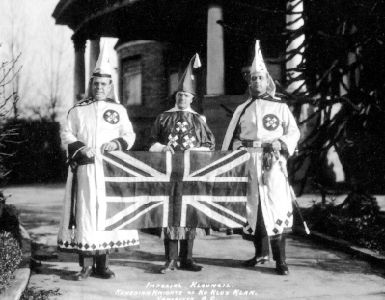Browse "Things"
-
Article
Koje-Do
Koje-Do (now Geojedo), is an island 40 kilometers southwest of Busan, South Korea, where the United States operated a prisoner of war (POW) camp during the Korean War. North Korean and Chinese prisoners rebelled and seized the camp.
"https://development.thecanadianencyclopedia.ca/images/tce_placeholder.jpg?v=e9dca980c9bdb3aa11e832e7ea94f5d9" // resources/views/front/categories/view.blade.php
https://development.thecanadianencyclopedia.ca/images/tce_placeholder.jpg?v=e9dca980c9bdb3aa11e832e7ea94f5d9
-
Article
Komagata Maru
The SS Komagata Maru was a chartered ship featured in a dramatic challenge to Canada’s former practice of excluding immigrants from India. This challenge took place in the spring and summer of 1914, on the eve of the First World War. It proved to be a bitter and tragic experience for the passengers, first in an unsuccessful and eventually physical confrontation with officials, police and the military at the Port of Vancouver, and then in a deadly encounter with police and troops near Kolkata on the passengers’ return to India.
"https://d2ttikhf7xbzbs.cloudfront.net/media/media/20903286-d4e3-4ac2-b6ee-3f42da586b7f.jpg" // resources/views/front/categories/view.blade.php
https://d2ttikhf7xbzbs.cloudfront.net/media/media/20903286-d4e3-4ac2-b6ee-3f42da586b7f.jpg
-
Article
Korean Music in Canada
In the 1986 Census of Canada, 29,705 listed Korean as their single or multiple ethnic origin. Half of these lived in the Metropolitan Toronto area.
"https://development.thecanadianencyclopedia.ca/images/tce_placeholder.jpg?v=e9dca980c9bdb3aa11e832e7ea94f5d9" // resources/views/front/categories/view.blade.php
https://development.thecanadianencyclopedia.ca/images/tce_placeholder.jpg?v=e9dca980c9bdb3aa11e832e7ea94f5d9
-
Article
Korean Music and Dance
The first significant wave of immigration to Canada from Korea began in the late 1960s and the early 1970s.
"https://development.thecanadianencyclopedia.ca/images/tce_placeholder.jpg?v=e9dca980c9bdb3aa11e832e7ea94f5d9" // resources/views/front/categories/view.blade.php
https://development.thecanadianencyclopedia.ca/images/tce_placeholder.jpg?v=e9dca980c9bdb3aa11e832e7ea94f5d9
-
Timelines
Korean War
The Korean War began 25 June 1950, when North Korean armed forces invaded South Korea. The war’s combat phase lasted until an armistice was signed 27 July 1953. As part of a United Nations (UN) force, 26,791 Canadian military personnel served in the Korean War, during both the combat phase and as peacekeepers afterward. After the two world wars, Korea remains Canada’s third-bloodiest overseas conflict, taking the lives of 516 Canadians and wounding more than...
"https://d2ttikhf7xbzbs.cloudfront.net/media/media/31d11a20-43ec-46fb-9894-4b9ee22bf140.jpg" // resources/views/front/categories/view.blade.php
https://d2ttikhf7xbzbs.cloudfront.net/media/media/31d11a20-43ec-46fb-9894-4b9ee22bf140.jpg
-
Article
Korean War
The Korean War began 25 June 1950, when North Korean armed forces invaded South Korea. The war’s combat phase lasted until an armistice was signed 27 July 1953. Canadian military personnel were part of a United Nations (UN) force consisting of 16 countries; 26,791 Canadians served during the combat phase and nearly 7,000 served as peacekeepers from 1953 to 1957. The last Canadian military personnel left Korea in 1957. After the two world wars, Korea remains Canada’s third-bloodiest overseas conflict, taking the lives of 516 Canadians and wounding more than 1,200. In total, an estimated three million people died during the war. More than half were civilians. The two Koreas remain technically at war today.
"https://d2ttikhf7xbzbs.cloudfront.net/media/media/51271c17-62c2-4218-a3d3-55323d04a04e.jpg" // resources/views/front/categories/view.blade.php
https://d2ttikhf7xbzbs.cloudfront.net/media/media/51271c17-62c2-4218-a3d3-55323d04a04e.jpg
-
Article
Krever Inquiry
The Commission of Inquiry on the Blood System in Canada, also known as the Krever Inquiry, was a public investigation of the Canadian blood system, which had been contaminated with the human immunodeficiency virus (HIV) and hepatitis C virus during the 1980s. (See also Aids.) In 1993, a public inquiry into the Canadian blood system was established and Justice Horace Krever was named commissioner. The infection of thousands of Canadians with (HIV) and hepatitis C is Canada's worst- ever preventable public health disaster. It has also become one of its most prolonged legal sagas, featuring a high-profile public inquiry, almost $10 billion in legal claims and a criminal investigation.
"https://development.thecanadianencyclopedia.ca/images/tce_placeholder.jpg?v=e9dca980c9bdb3aa11e832e7ea94f5d9" // resources/views/front/categories/view.blade.php
https://development.thecanadianencyclopedia.ca/images/tce_placeholder.jpg?v=e9dca980c9bdb3aa11e832e7ea94f5d9
-
Macleans
Krever Report Released
This article was originally published in Maclean’s magazine on December 8, 1997. Partner content is not updated. They still serve up doughnuts and juice afterward. Otherwise, much has changed for anyone giving blood at a Red Cross clinic in Canada. The questions are chastening. Have you ever paid for sex, a nurse asks.
"https://development.thecanadianencyclopedia.ca/images/tce_placeholder.jpg?v=e9dca980c9bdb3aa11e832e7ea94f5d9" // resources/views/front/categories/view.blade.php
https://development.thecanadianencyclopedia.ca/images/tce_placeholder.jpg?v=e9dca980c9bdb3aa11e832e7ea94f5d9
-
Article
Kronborg: 1582
Kronborg: 1582 (other titles: Rockabye Hamlet, Something's Rockin' in Denmark, Hamlet - The Musical). Rock musical by Cliff Jones after Shakespeare's Hamlet.
"https://development.thecanadianencyclopedia.ca/images/tce_placeholder.jpg?v=e9dca980c9bdb3aa11e832e7ea94f5d9" // resources/views/front/categories/view.blade.php
https://development.thecanadianencyclopedia.ca/images/tce_placeholder.jpg?v=e9dca980c9bdb3aa11e832e7ea94f5d9
-
Article
Ku Klux Klan
The Ku Klux Klan is an outlawed, racist, ultra-conservative, fraternal organization dedicated to the supremacy of an Anglo-Saxon, Protestant society.
"https://d2ttikhf7xbzbs.cloudfront.net/media/media/86b65a64-68c5-41d5-820f-b053a20b76fb.jpg" // resources/views/front/categories/view.blade.php
https://d2ttikhf7xbzbs.cloudfront.net/media/media/86b65a64-68c5-41d5-820f-b053a20b76fb.jpg
-
Macleans
Kurdish Terrorist Captured
This article was originally published in Maclean’s magazine on March 1, 1999. Partner content is not updated.To most Turks, Abdullah Ocalan is a monster responsible for the deaths of innocent men, women and children in a fierce guerrilla war.This article was originally published in Maclean's Magazine on March 1, 1999
"https://development.thecanadianencyclopedia.ca/images/tce_placeholder.jpg?v=e9dca980c9bdb3aa11e832e7ea94f5d9" // resources/views/front/categories/view.blade.php
https://development.thecanadianencyclopedia.ca/images/tce_placeholder.jpg?v=e9dca980c9bdb3aa11e832e7ea94f5d9
-
Article
Kwanzaa
Kwanzaa is an African American cultural holiday that has been adopted around the world, including in Canada, to celebrate African family, community and culture.
"https://d2ttikhf7xbzbs.cloudfront.net/media/media/e1909fb3-4c4e-4f77-bbc7-81cdccc0e368.jpg" // resources/views/front/categories/view.blade.php
https://d2ttikhf7xbzbs.cloudfront.net/media/media/e1909fb3-4c4e-4f77-bbc7-81cdccc0e368.jpg
-
Macleans
Kyoto Accord Opposition Growing
In Alberta political circles, Lorne Taylor is sometimes referred to as the "egghead redneck." It is a mark of the man that Taylor, who is Alberta's environment minister and who holds a Ph.D. in educational psychology, takes more umbrage at the first half of that moniker than the latter.This article was originally published in Maclean's Magazine on October 14, 2002
"https://development.thecanadianencyclopedia.ca/images/tce_placeholder.jpg?v=e9dca980c9bdb3aa11e832e7ea94f5d9" // resources/views/front/categories/view.blade.php
https://development.thecanadianencyclopedia.ca/images/tce_placeholder.jpg?v=e9dca980c9bdb3aa11e832e7ea94f5d9
-
Article
L' Action française
Action française, L' , a monthly magazine published 1917-28 in Montréal. It was the voice of a group of priests and nationalists who comprised the Ligue des droits du français, an organization formed in
"https://d2ttikhf7xbzbs.cloudfront.net/media/media/6e559a82-fa39-4e67-8505-cd188e83d9d0.jpg" // resources/views/front/categories/view.blade.php
https://d2ttikhf7xbzbs.cloudfront.net/media/media/6e559a82-fa39-4e67-8505-cd188e83d9d0.jpg
-
Article
L' Action nationale
L'Action nationale was founded in 1933 by economist Esdras Minville as the voice of the Ligue d'Action nationale. It is the oldest journal of intellectual opinion writing in Quebec.
"https://d2ttikhf7xbzbs.cloudfront.net/media/media/6e559a82-fa39-4e67-8505-cd188e83d9d0.jpg" // resources/views/front/categories/view.blade.php
https://d2ttikhf7xbzbs.cloudfront.net/media/media/6e559a82-fa39-4e67-8505-cd188e83d9d0.jpg
